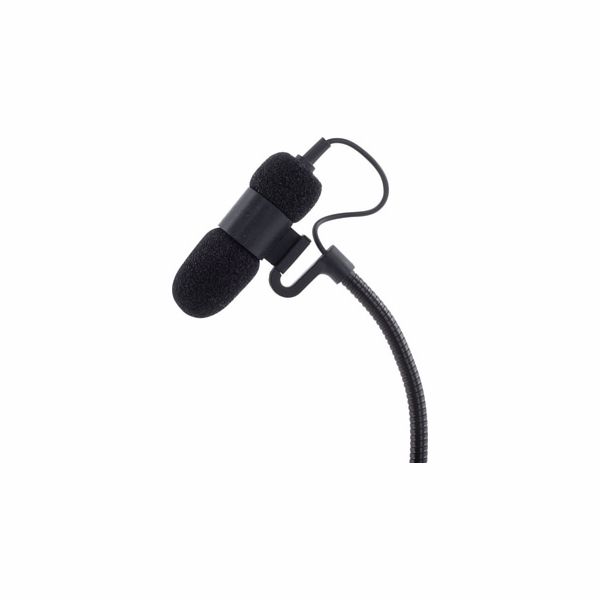Mein vorläufiges Testergebnis lautet folgendermaßen:
1. Das Mikrophon klingt ordentlich, bringt also den natürlichen Klang des Instruments recht gut,
2. Der Schwanenhals macht einen soliden Eindruck, er ist aus Metall und scheint seine einmal eingebogene Form zuverlässig zu halten, das macht einen soliden Eindruck
3. Das Kabel ist extrem dünn und erscheint fipselig. Außerdem könnte es, da es lediglich die Verbindung zu einem Gürtelclop herstellen soll, der dann wiederum eine Aufnahme für ein gewöhnliches XLR-Kabel hat, zu lang. Dieser Umstand ist von verschiedenen Leuten auf der Seite vom großen T. schon angemerkt worden. Einer schrieb sogar, er habe das Kabel nach einem Bruch abgeschnitten, ein dickeres angelötet und die betreffende Stelle so Zug-entlastet, daß das dickere Kabel jetzt die Funktion des vormaligen Originalkabels übernehme,
4. Die Halterung - der ergänzend bestellbare Clip für akustische Gitarre - zur Befestigung am Mikrophon ist zwar einigermaßen solide gebaut, die geteilte Schiene beispielsweise besteht aus Metall. Aber das Design läßt aus zwei Gründen dennoch zu wünschen übrig:
a) Die Überstände auf Decke und Boden könnten und sollten deutlich länger sein, denn so, wie vorliegend, hält das System nicht sonderlich gut. Das mag auf polierten Oberflächen durch die "Klebwirkung" der Weichfüße anders sein. Allerdings wissen wohl alle um die Möglichkeit der Beschädigung von Nitrolacken durch Kunststoffe,
b) Die Verstellbarkeit der Halterung zur Anpassung an unterschiedliche Zargentiefen bringt mit sich, daß der überflüssige Teil der Halterung nach hinten über die Ebene des Bodens hinausragt, wie man auf den Bildern erkennen kann. Hier wäre eine Teleskop-Konstruktion das Angezeigte.
Fazit: Gut, aber in den zu 4 a) und b) genannten Punkten verbesserungswürdig.
Unter live-Bedingungen habe ich das ganze noch nicht probiert.
Die Gesamtbewertung endet bei mir mit "zufrieden", wiewohl die Einsatztauglichkeit eine andere Halterung und ein weniger fipseliges Kabel voraussetzen würde. Ich plane, einen Umbau zu basteln und habe mich angesichts des Preises nicht allzu sehr darüber zu beschweren.






